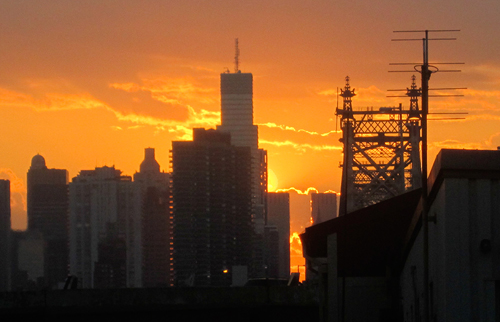New research will look at heat wave risks during pandemic
Scientists to study intersecting impacts of extreme heat and COVID-19
Jun 23, 2020 - by David Hosansky
Jun 23, 2020 - by David Hosansky
Update (August 17): The first survey results are available here.
As the United States nears its hottest time of the year, scientists are launching a research project into whether the public health impacts of extreme heat will be amplified by the COVID-19 pandemic.
Both heat waves and the novel coronavirus disproportionately affect the elderly and people with preexisting health conditions. However, the guidance for at-risk residents during the pandemic – to stay home and avoid crowded public spaces – runs counter to recommendations during heat waves that residents who lack air conditioning spend time in air-conditioned public spaces.
"Social distancing reduces risk of COVID-19. However, social isolation – especially without adequate cooling – increases people’s risk of heat-related illness," said Olga Wilhelmi, a geographer at the National Center for Atmospheric Research (NCAR) with expertise in societal risk and extreme heat. "It's important that we understand these intersecting risks because they can compound to produce significant health impacts."

To further investigate these issues, Wilhelmi and a team of researchers will conduct three national surveys this summer, querying a total of 3,000 residents. The surveys will consist of questions about COVID-19 and extreme heat, including self-reported symptoms and potential household coping mechanisms. The surveys will also ask about perceptions of the risks from both the pandemic and heat waves and the effectiveness of taking protective actions against them.
The researchers will share preliminary results during the summer via a web-based mapping tool showing perceptions and vulnerabilities in different states and counties. This can help guide efforts by public health officials to better protect at-risk populations through such strategies as regularly checking on the elderly during heat waves and emphasizing the importance of seeking help when experiencing symptoms of heat exhaustion, which may include muscle cramping, fatigue, headache, nausea or vomiting, dizziness, or fainting.
The project brings together an interdisciplinary team of researchers at NCAR; the University of Colorado, Colorado Springs; and Utah State University. It is funded by the National Science Foundation, NCAR's sponsor, through a special RAPID (Grants for Rapid Response Research) award.
Heat is one of the deadliest weather-related health risks, killing more than 650 Americans yearly, according to the Centers for Disease Control. Scientists warn that heat waves are becoming more extreme with climate change.
COVID-19 has killed more than 100,000 Americans since February. Several states have recently reported an increased number of cases, potentially placing more people at risk for heat-related impacts as they try to avoid public cooling spaces.
"We know that how people perceive different risks can shape how they respond, but Americans this summer are facing a combination of serious risks in COVID and extreme heat," said Peter Howe, a professor of geography at Utah State University and collaborator on the study. "This project will help us understand how these multiple intersecting hazards shape people’s experiences."
The pandemic has also had devastating economic impacts, with tens of millions of Americans losing their jobs. This may have implications for heat vulnerability, Wilhelmi warned, because residents who are struggling economically may not be able to afford air conditioning.
Vulnerable residents also could be so concerned about COVID-19 that they may disregard the potential risks of heat waves, an effect known as "finite pool of worry" that scientists have found with other hazards. Furthermore, the air-conditioned public spaces that have provided relief in the past, like senior centers and libraries, are now closed in many cities and states.
"We are concerned that all these factors could lead to a deadly summer for residents who are vulnerable to extreme heat," Wilhelmi said.
The researchers warned that conditions during the summer may change rapidly in different parts of the country, depending on such factors as heat waves, social distancing guidelines, and disease spread.
"Because of the rapidly evolving nature of both risks, it is critical that officials ensure that those most vulnerable to both extreme heat and COVID-19 are receiving timely messages on how to best protect themselves," said project collaborator Mary Hayden, a professor at the National Institute for Human Resilience at the University of Colorado, Colorado Springs.
The project is supported by NSF RAPID award 2031217.